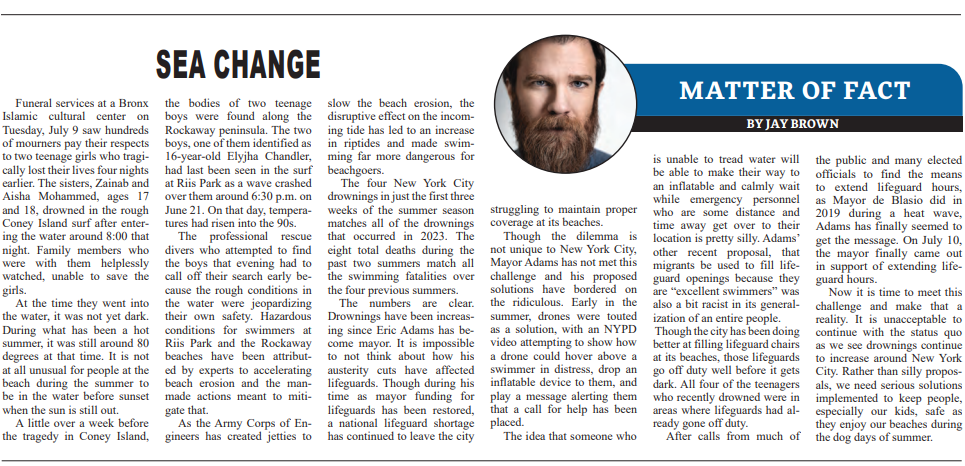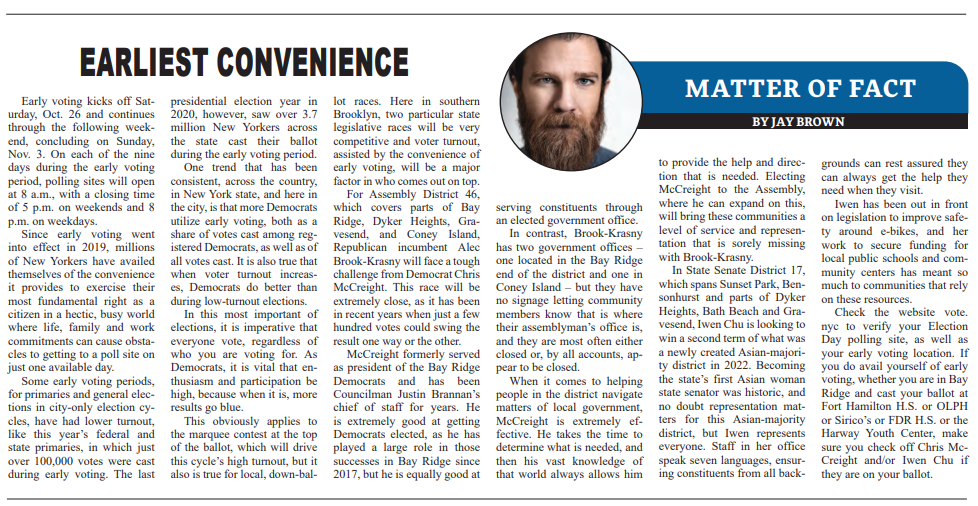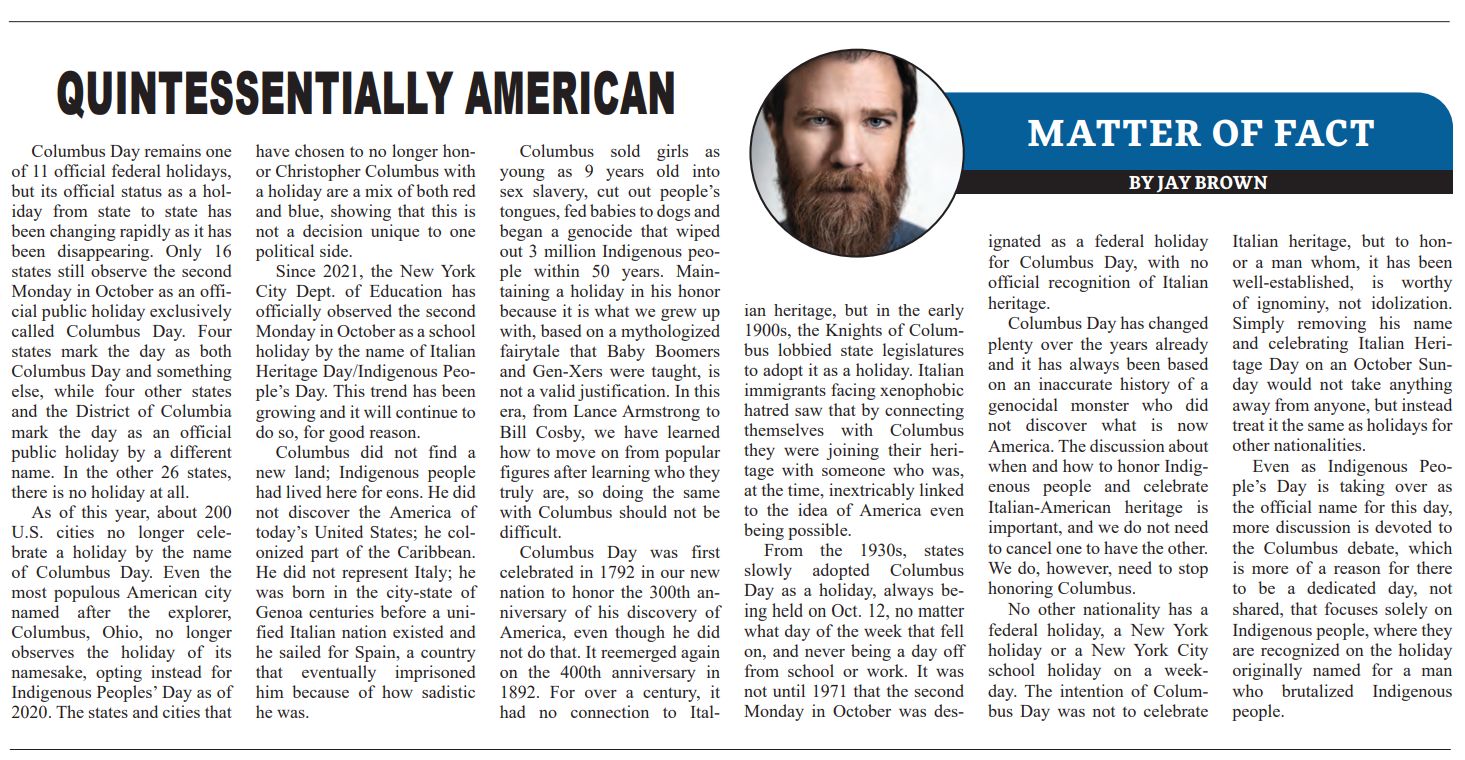This column, from the weekly opinion piece MATTER OF FACT, first appeared on BrooklynReporter.com, the Home Reporter and Spectator dated July 19, 2024
Funeral services at a Bronx Islamic cultural center on Tuesday, July 9 saw hundreds of mourners pay their respects to two teenage girls who had tragically lost their lives four nights earlier. The sisters, Zainab and Aisha Mohammed, ages 17 and 18, had drowned in the rough Coney Island surf after entering the water around 8:00 PM that night. Family members who were with them helplessly watched, unable to save the girls.
At the time they went into the water, it was not yet dark. During what has been a hot summer, it was still around 80 degrees at that time. It is not at all unusual for people at the beach during the summer to be in the water before sunset when the sun is still out .
A little over a week before the tragedy in Coney Island, the bodies of two teenage boys were found along the Rockaway peninsula. The two boys, one of them identified as 16-year old Elyjha Chandler, had last been seen in the surf at Riis Park as a wave crashed over them around 6:30 PM on June 21. On that day, temperatures had risen into the 90s.
The professional rescue divers who attempted to find the boys that evening had to call off their search early because the rough conditions in the water were jeopardizing their own safety. Hazardous conditions for swimmers at Riis Park and the Rockaway beaches have been attributed by experts to accelerating beach erosion and the man-made actions meant to mitigate that.
As the Army Corps of engineers has created jetties to slow the beach erosion, the disruptive effect on the incoming tide has led to an increase in riptides and made swimming far more dangerous for beachgoers.
The four New York City drownings in just the first three weeks of the summer season matches all of the drownings that occurred in 2023. The 8 total deaths during the past two summers match all the swimming fatalities over the four previous summers.
The numbers are clear. Drownings have been increasing since Eric Adams has become mayor. It is impossible to not think about how his austerity cuts have affected lifeguards. Though during his time as mayor funding for lifeguards has been restored, a national lifeguard shortage has continued to leave the city struggling to maintain proper coverage at its beaches.
Though the dilemma is not unique to New York City, Mayor Adams’ has not met this challenge and his proposed solutions have bordered on the ridiculous. Early in the summer, drones were touted as a solution, with an NYPD video attempting to show how a drone could hover above a swimmer in distress, drop an inflatable device to them, and play a message alerting them that a call for help has been placed.
The idea that someone who is unable to tread water will be able to make their way to an inflatable and calmly wait while emergency personnel who are some distance and time away get over to their location is pretty silly. Adams’ other recent proposal, that migrants be used to fill lifeguard openings because they are “excellent swimmers” was also a bit racist in its generalization of an entire people.
Though the city has been doing better at filling lifeguard chairs at its beaches, those lifeguards go off duty well before it gets dark. All four of the teenagers who have recently drowned were in areas where lifeguards had already gone off duty.
After calls from much of the public and many elected officials to find the means to extend lifeguard hours, as Mayor de Blasio did in 2019 during a heat wave, Adams has finally seemed to get the message. On July 10, the mayor finally came out in support of extending lifeguard hours.
Now it is time to meet this challenge and make that a reality. It is unacceptable to continue with the status quo as we see drownings continue to increase around New York City. Rather than silly proposals, we need serious solutions implemented to keep people, especially our kids, safe as they enjoy our beaches during the dog days of summer.




